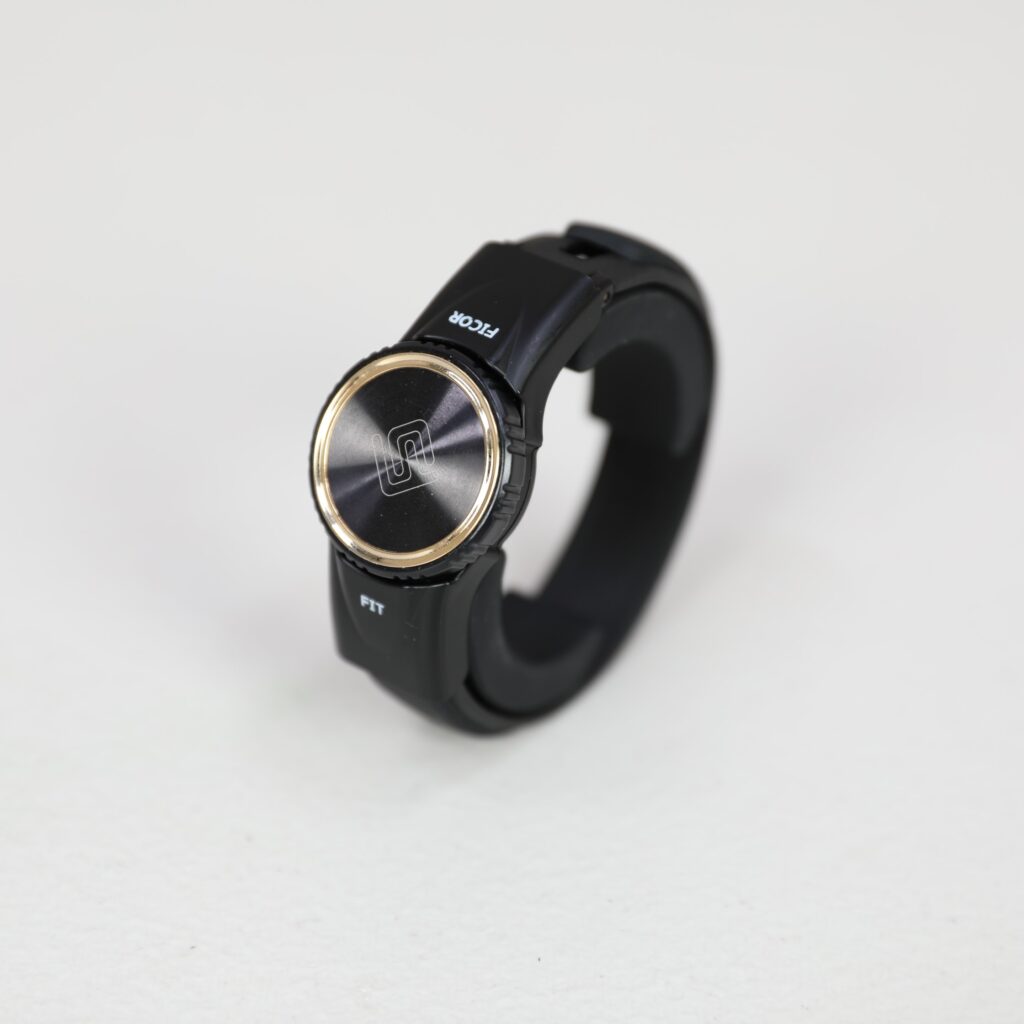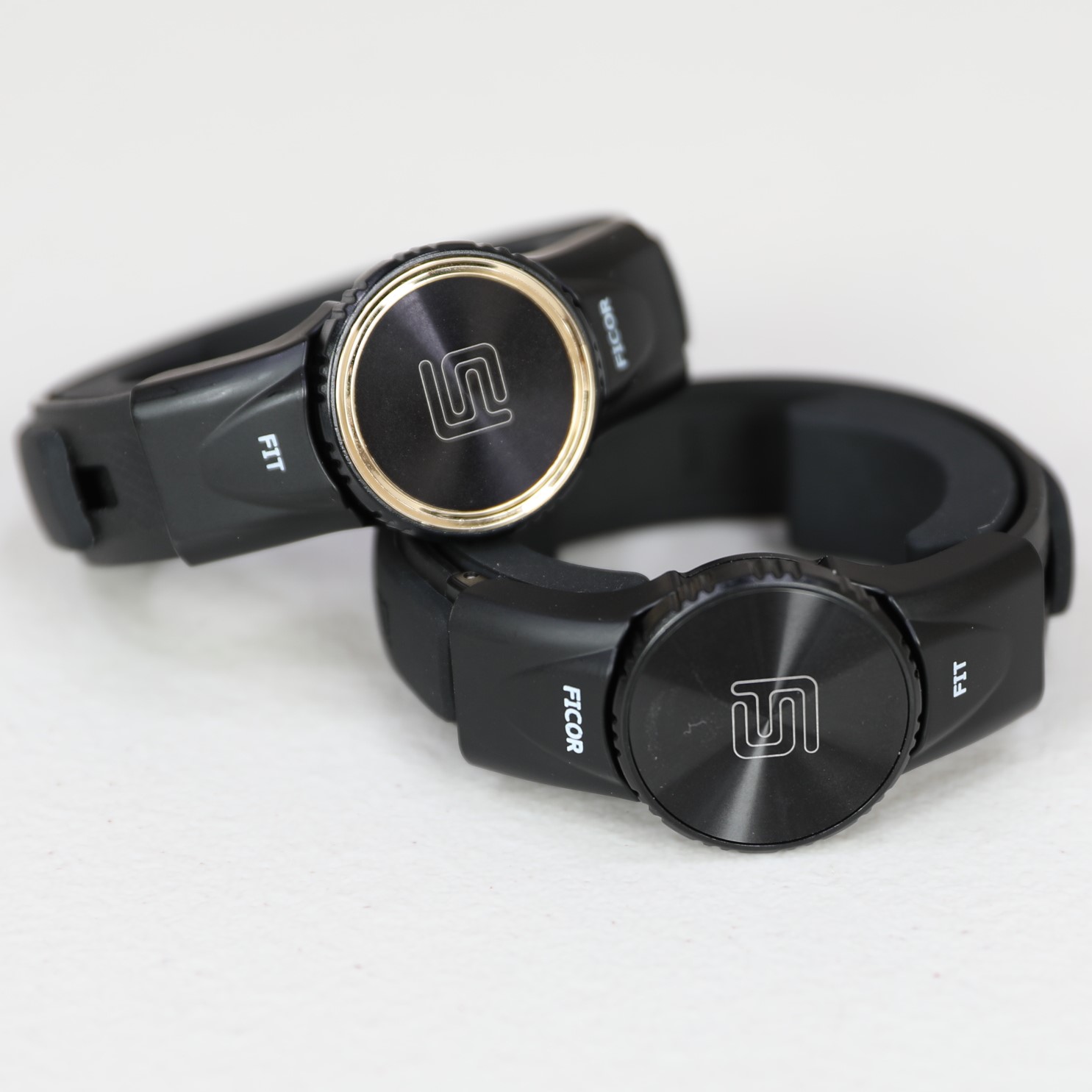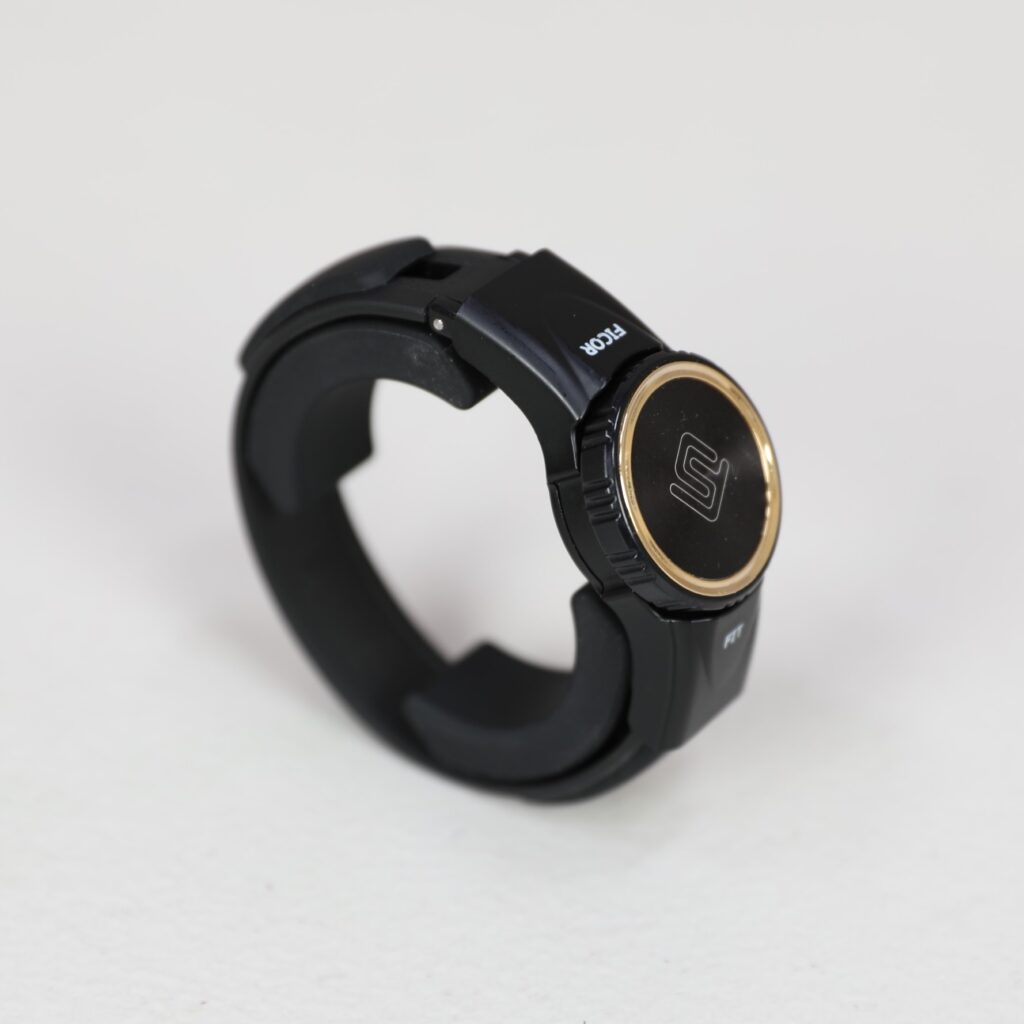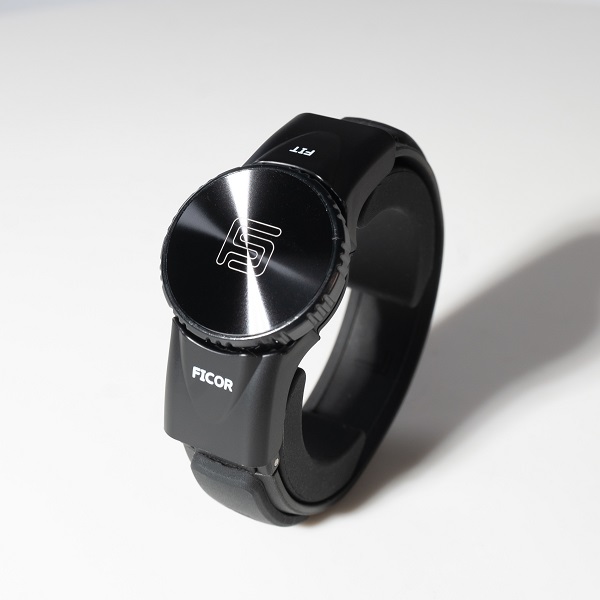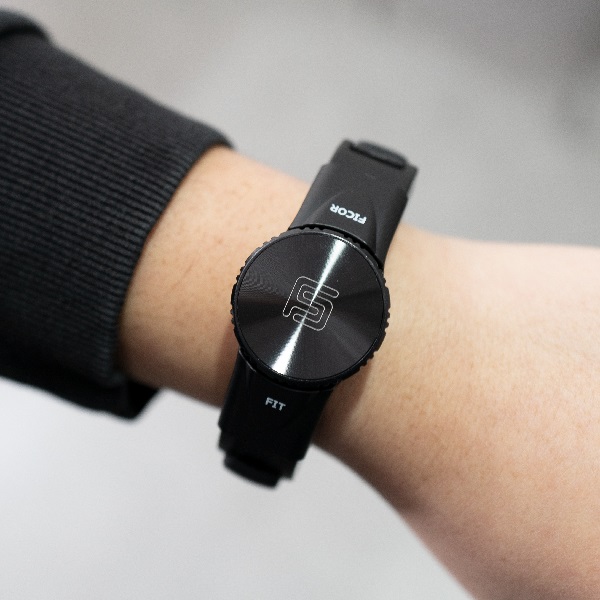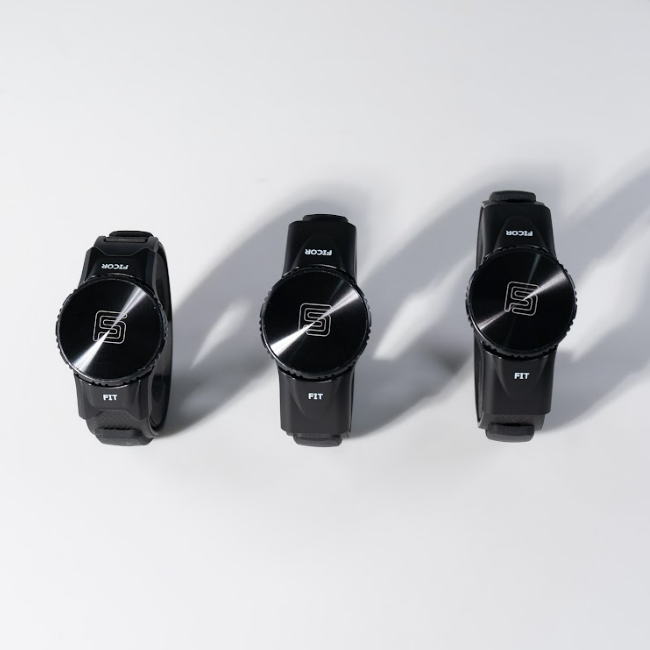Ships within 10 days.
30 Day Money-Back Guarantee
U.S. Company
Sprained Wrist Treatment
Wristband for Sprained Wrist Pain Relief
What is a sprained wrist?
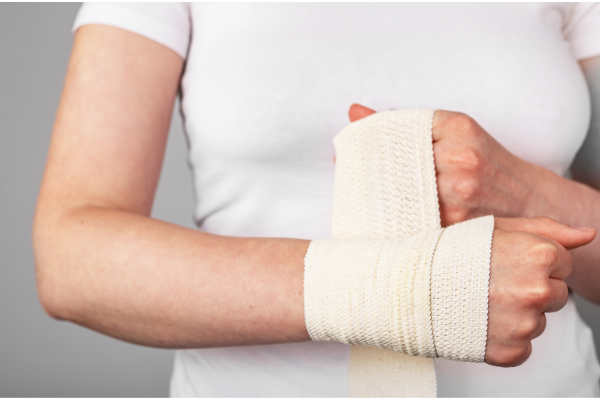
A sprained wrist is an injury that occurs when the ligaments, which are tough bands of tissue connecting the bones in the wrist joint, are stretched or torn. This typically happens due to a sudden force, twisting motion, or impact on the wrist, leading to pain, swelling, bruising, and reduced range of motion in the affected wrist.
What are some sprained wrist symptoms?
How do you know if you sprained your wrist? Symptoms of a sprained wrist can vary in severity depending on the extent of the injury but often include:
Pain: One of the primary symptoms is pain in the wrist, which may be sharp or dull and can range from mild to severe.
Swelling: The injured area may become swollen which is the body’s natural response to the injury, causing the wrist to appear puffy or larger than usual.
Bruising: Bruising or discoloration of the skin around the wrist may occur due to blood vessel damage in the injured area.
Limited Range of Motion: A sprained wrist can lead to difficulty moving the wrist joint, making it painful to bend or twist the wrist.
Tenderness: The wrist may be tender to the touch, especially in the area where the ligaments are injured.
Weakness: You may experience weakness in the wrist, making it challenging to grip objects or perform normal activities.
Instability: In more severe cases, a sprained wrist can lead to wrist joint instability, where the wrist feels wobbly or unreliable.
Do wristbands help with wrist pain from a sprained wrist?

Wristbands are beneficial in managing wrist pain from a sprained wrist. Here’s how to treat a sprained wrist:
Stability: Wristbands provide stability to the injured wrist by limiting its range of motion. This helps prevent further strain or injury to affected ligaments while allowing them to heal.
Compression: Some wristbands, like the Ficor Fit band, provide compression to the wrist, which can help reduce swelling and provide a soothing effect. Compression also promotes better circulation and facilitates the healing process.
Pain Relief: Wristbands provide pain relief by reducing the movement of the wrist, which can be especially helpful during activities that may exacerbate the pain.
Reminder to Rest: Wearing a wristband can serve as a visual and tactile reminder to avoid overusing the injured wrist. Rest is an essential component of healing a sprained wrist.
What triggers or makes sprained wrist pain worse?
Several actions can trigger or exacerbate the pain from a sprained wrist and should be avoided.
Here are common triggers:
Movement: Any movement that involves bending, twisting, or putting pressure on the wrist joint can increase pain. This includes activities like gripping, lifting, typing, or using tools.
Stress or Strain: Excessive stress or strain on the injured wrist can worsen the pain. This can occur when lifting heavy objects, performing repetitive tasks, or engaging in activities that require a strong grip.
Impact or Trauma: Additional trauma or impact to the already injured wrist can worsen the sprain. Accidental falls or bumps, for example, can lead to increased pain and potential re-injury.
Cold Temperatures: Cold weather or exposure to cold temperatures can cause stiffening of the joints and may increase pain and discomfort in a sprained wrist.
Swelling: Swelling is a common symptom of a sprained wrist, and increased swelling can put additional pressure on the surrounding tissues and nerves, leading to more pain.
Ignoring Rest: Failing to rest and allow the injured wrist to heal properly can exacerbate pain. Rest is crucial for the recovery process.
Inadequate Support: Not providing proper support to the wrist, such as not wearing a brace or splint when recommended, can lead to continued strain on the injured ligaments and increased pain.
Repetitive Movements: Engaging in repetitive movements or activities without giving the wrist adequate time to heal can lead to chronic pain and delayed recovery.
Do wrist sprains heal on their own?
Some wrist sprains heal with time and appropriate self-care. However, the sprained wrist recovery time can vary depending on the severity of the sprain. Here are some key points to consider:
Mild Sprains: Mild wrist sprains, which involve minor stretching or microscopic tearing of ligaments, can be helped to heal using rest, ice, compression, and elevation (the RICE protocol). Wearing a sprained wrist brace or wristband can help with mild sprains.
Moderate Sprains: Moderate sprains, which involve partial tearing of ligaments, may require more time to heal. Rest, immobilization with a wristband, brace, or splint, and gradual return to normal activities are usually recommended.
Severe Sprains: Severe wrist sprains, where ligaments are completely torn or multiple ligaments are affected, may require surgical intervention to repair the damaged ligaments. A healthcare provider can assess the severity of your injury and provide recommendations to ensure the best possible recovery outcome.
To promote the healing process and prevent further injury, it’s essential to:
- Rest: Avoid activities that exacerbate the pain and strain on the wrist.
- Immobilization: Use a wristband, a brace, or a splint as recommended to limit wrist movement.
- Ice: Apply ice packs to reduce swelling and pain (typically for the first 48 hours after the injury).
- Compression: Use a wristband or compression bandage to control swelling, but ensure it’s not too tight.
- Elevation: Keep the wrist elevated above heart level when resting to minimize swelling.
Gentle range-of-motion exercises and physical therapy may be prescribed to restore wrist strength and flexibility as the injury heals.

Are you suffering from a sprained wrist?
Experience the pain-relieving design
of the Ficor Goldilocks wristband
How long does a sprained wrist take to heal?
The time it takes for a sprained wrist to heal depends on the severity of the injury and how well it is managed. Here are some general guidelines for expected healing times:
Mild Wrist Sprain: Mild sprains typically heal within a few days to a couple of weeks with appropriate self-care.
Moderate Wrist Sprain: Moderate sprain may take several weeks to a couple of months to heal.
Severe Wrist Sprain: Severe wrist sprains may take several months to heal. Some people with severe sprains may need surgery to repair damaged ligaments, which can extend the recovery timeline.
Healing times vary, and factors like age, overall health, adherence to treatment recommendations, and the effectiveness of rehabilitation exercises can influence the healing process. Returning to regular activities too soon can increase the risk of reinjury or prolonged healing.
What’s the fastest way to heal a wrist sprain?
Healing from a wrist sprain takes time. Initially, rest and immobilization are crucial. Applying ice and using compression by wearing a wristband can reduce swelling and pain. Elevating the wrist above heart level helps minimize swelling. Over-the-counter pain relievers may be used. Good nutrition and hydration support tissue repair. Maintaining a positive and patient attitude helps. Rushing the process can lead to setbacks. Consult your healthcare provider if you have concerns about your progress or worsening pain.
How long do you have to wear a wristband or brace for a sprained wrist?
The duration of wearing a wristband is based on the severity of the injury. A doctor can assess the severity of your sprain and provide guidance on when it is safe to discontinue using the wristband and gradually return to normal activities. Some people wear them as a preventative measure.
How can the Ficor Fit band help relieve pain from a wrist sprain?
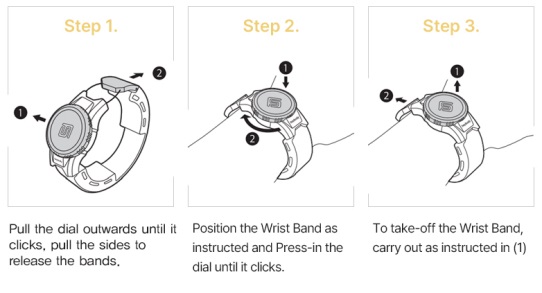
The Ficor Fit band provides unmatched support and stability for your sprained wrist. Its adjustable strap guarantees a personalized fit, gently compressing the wrist to alleviate swelling and swelling. Its wind-wire dial allows easy control and release of compression. The sides of the band are designed to apply pressure on the 2 column bones for stabilization. The Ficor wristband comes in a range of sizes and is made using Thermo Plastic Elastomer material which has excellent resilience and shock absorption. It also minimizes bacteria propagation. Concurrently, its breathable design promotes air circulation, keeping your wrist cool and comfortable during the healing process.
Is it okay to wear the Ficor Fit band at night for wrist sprain pain relief?
Wearing the Ficor Fit band or the Ficor Goldilocks band at night may offer support and stability for your sprained wrist during your healing process. Take off your wristband periodically to clean it and allow your skin to breathe. Consult a healthcare provider for personalized guidance on sprained wrist treatment if your wrist pain is severe and doesn’t improve. Our wristbands can also help with pain from Carpal Tunnel, Triangular Fibrocartilage Injuries, Tennis Elbow, Tendonitis, or De Quervain’s Tenosynovitis.
Wrist Pain Symptoms
Symptoms of CTS include pain and tingling in the wrist & fingers, numbness/weakness in the hand.
Golfer’s elbow occurs when the tendons and muscles in the forearm are overused.
The symptoms of Tennis Eblow can include pain, swelling, and stiffness in the elbow.
Repetitive Strain Injury (RSI) is caused by repetitive motions such as typing, sewing, or using a mouse.
Triangular Fibrocartilage injuries are caused by overuse or misuse of a muscle or joint.
Wrist tendonitis is inflammation of the wrist tendons and can affect all ages.
Wrist sprains are characterized by twisting or rotating the wrist suddenly.
De Quervain’s Tenosynovitis causes pain and tingling in the wrist or hand.




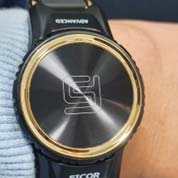
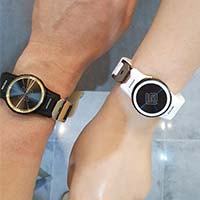

© Ficor Health, Inc. | All Rights Reserverd

